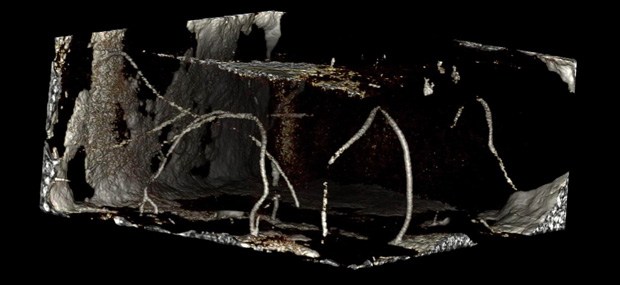New imaging technique reveals vulnerability of coral reefs
 Image from µCT scan highlighting bioerosion in a coral block. Image courtesy of Nyssa Silbiger and Mark Riccio.
Image from µCT scan highlighting bioerosion in a coral block. Image courtesy of Nyssa Silbiger and Mark Riccio.Corals, the primary reef builders on coral reefs, are often the star player in research studies addressing the impacts of climate change on coral reefs because they are the foundation of coral reef ecosystems. However, the breakdown of coral reefs from borers (such as bivalves, sponges, and marine worms) and grazers (such as parrotfish and urchins)—called bioerosion—and growth from encrusting algae and invertebrates (for example, oysters and barnacles)—called secondary accretion—are critical processes for reef sustainability.
In a study published on 13 April 2016 in PLOS ONE, Nyssa Silbiger and colleagues created a novel method to expose how these underdogs of coral reef science respond to varying environmental conditions, including changing ocean acidity. Using µCT (micro-computed tomography) scans, Silbiger and colleagues were able to calculate detailed bioerosion and secondary accretion rates on coral reefs—work she performed as a graduate student at the Hawaiʻi Institute of Marine Biology (HIMB).
Read more about it in the UH System News.



